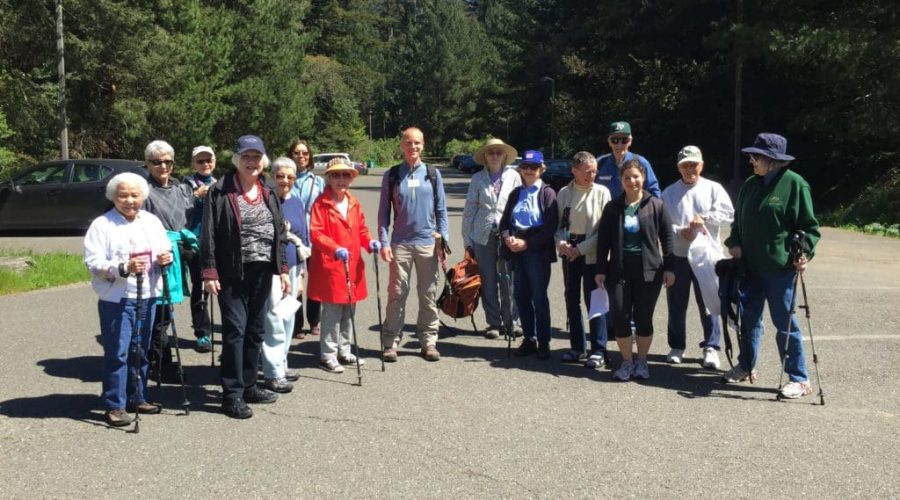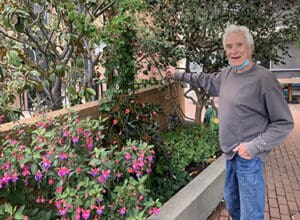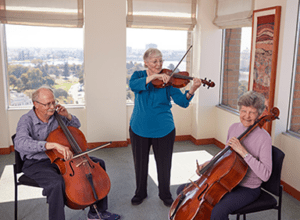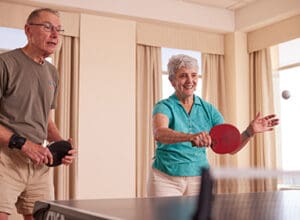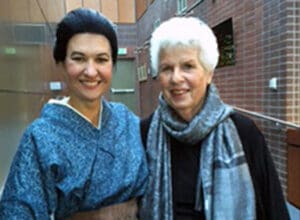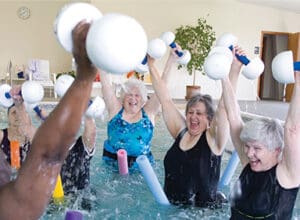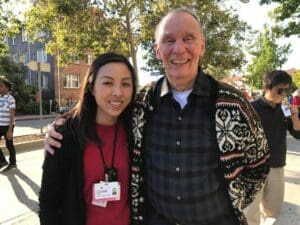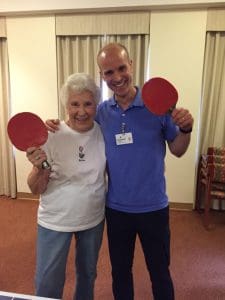 May 30, 2018 marked the 25th anniversary of National Senior Health and Fitness Day, which is observed annually on the last Wednesday in May. We interviewed Esteban Sahade, Wellness Coordinator for St. Paul’s Towers, for his insights on senior health and fitness.
May 30, 2018 marked the 25th anniversary of National Senior Health and Fitness Day, which is observed annually on the last Wednesday in May. We interviewed Esteban Sahade, Wellness Coordinator for St. Paul’s Towers, for his insights on senior health and fitness.
How did you get involved in senior health and fitness?
When I was in grad school I took an internship to work in health and fitness with seniors. It was an opportunity to learn something I was little familiar with. As I started I discovered a new, fascinating world. I felt that all my previous training, experience and even my personality came together and preparing me for that. Soon afterwards I knew it was what I wanted to do from that moment on.
What (if anything) is different about senior health and fitness from being a fitness trainer for other populations?
From a fitness perspective I think it’s a most rewarding experience. You can positively impact so many lives. With a relatively small investment of time and energy you can see fast and profound functional changes. You’re directly helping them improving their quality of life, independence, and dignity. Besides that, older adults recognize and are grateful for any effort, little or big, in helping them improve, and the time you put into it.
What do you think would surprise people about senior fitness?
One thing that surprises many people is to know that the rate of improvement in some fitness components, like muscular strength, is similar for people in their 90s and people in their 20s. There are challenges, but with good care, the right stimulus, and in the absence of disease and injuries/accidents, the aging human body is capable of outstanding physical achievements, as shown by the performance of senior athletes who train and compete in many sports and age categories, including 100+.
What do you recommend for someone who wants to stay fit and healthy as a senior?
Find activities you like and enjoy. Exercise is not really necessary if you have a diverse physically active lifestyle. The movement involved in regular activities such as grocery shopping, gardening, domestic chores, visiting friends or family, playing with your grandchildren, walking your dog, dancing, travelling, etc., may be all the stimulus your body needs to stay fit and healthy. Add movement throughout your day; for example, stand more times, walk more when you have the opportunity (or create some), and use the stairs if you can.
Why is it important to recognize senior health and fitness?
Because it’s not about exercise, it’s about life and dignity. Failing to recognize its importance creates a negative social conditioning. Even if times have changed, many people, including family members, still think that their elders are too old or too frail to move or to exercise. This results in lost opportunities and motivation for seniors to get more fit and be healthier, creating an environment that leads them to an accelerated decline and functional loss.
What have you learned from working with seniors on health and fitness?
It doesn’t matter how active (or little active) you’ve been all your life. It’s never too late to start moving more, or different, and increase your body functional capacity which will result in positive changes in your life, improved wellbeing (not only physical, but also psychological, emotional, and even social), and better quality of life.
